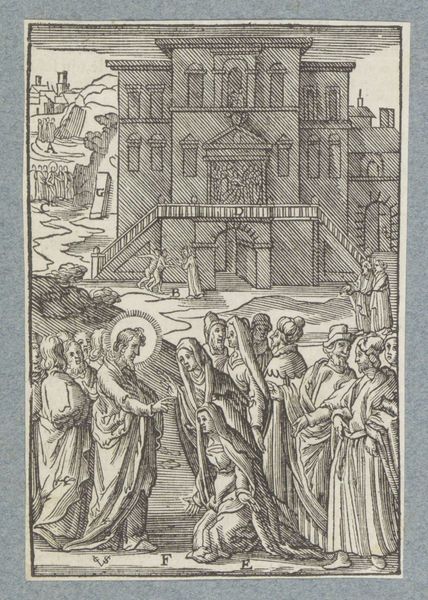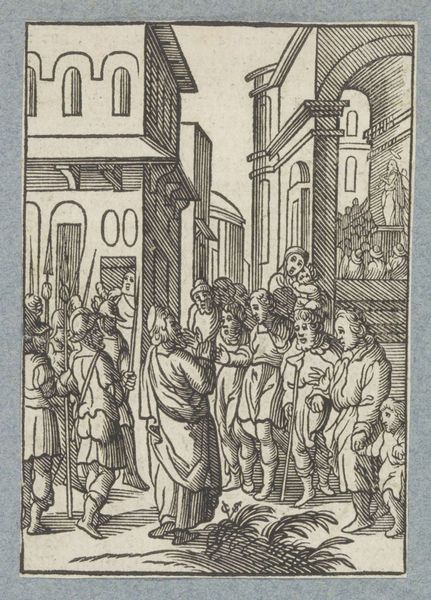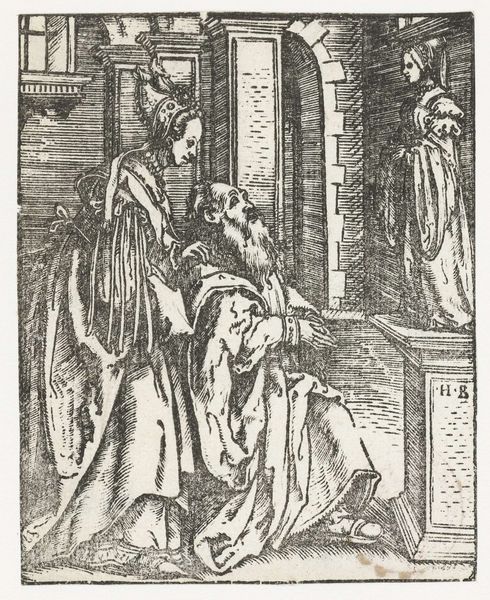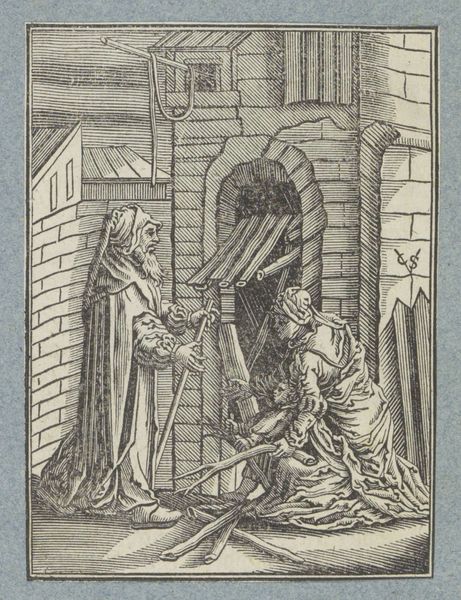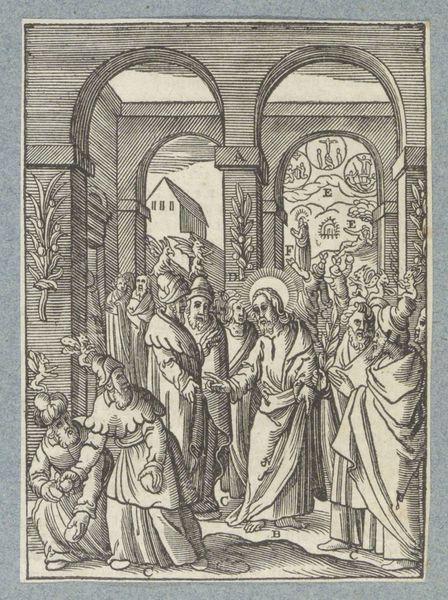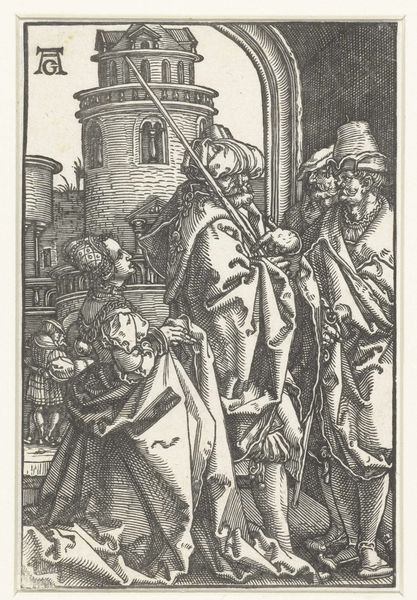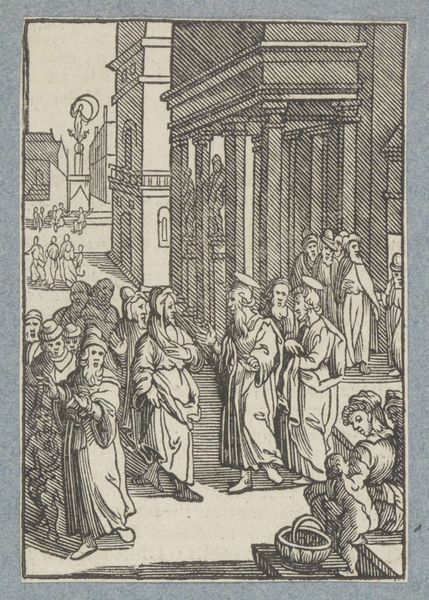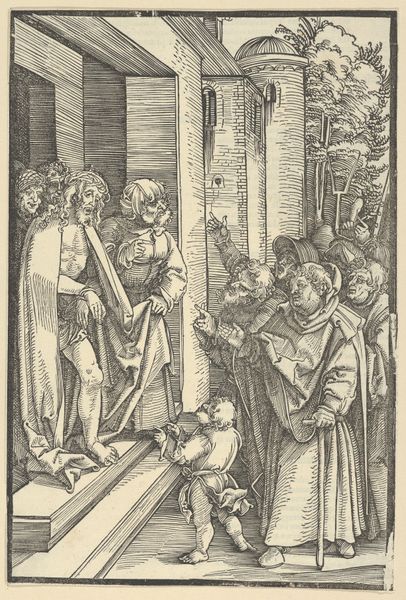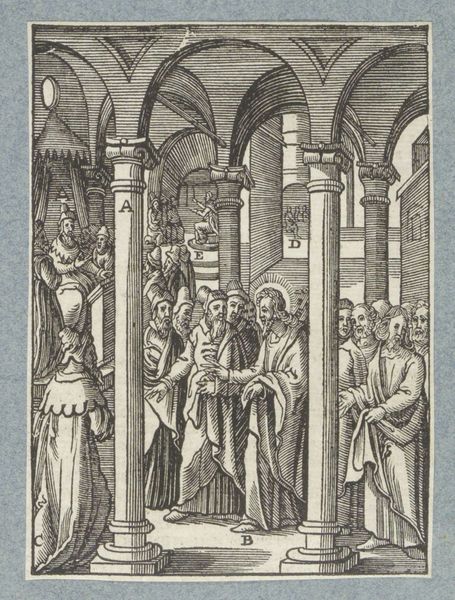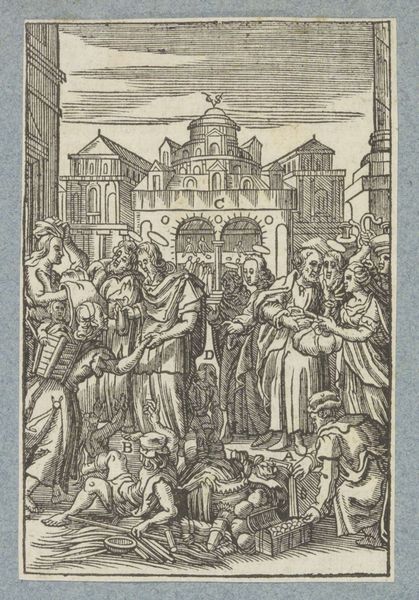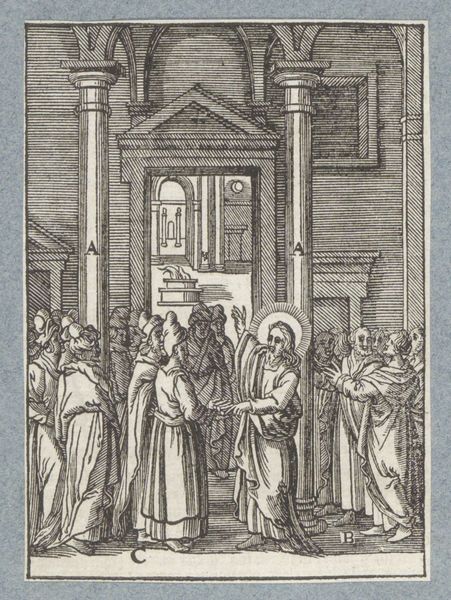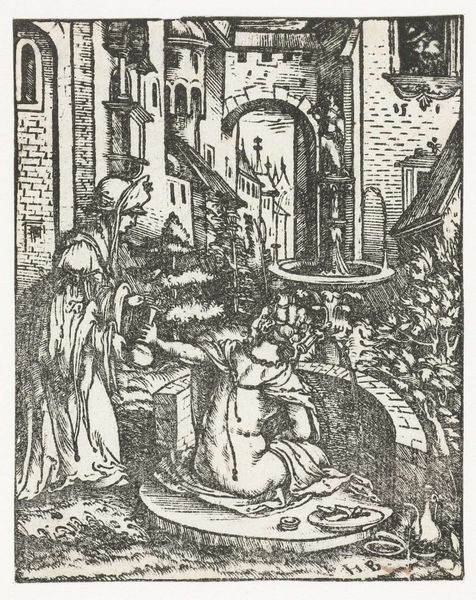
Judit en haar dienstmaagd op weg naar Holofernes 1645 - 1646
0:00
0:00
print, engraving
#
dutch-golden-age
# print
#
figuration
#
history-painting
#
engraving
Dimensions: height 111 mm, width 81 mm
Copyright: Rijks Museum: Open Domain
Editor: We’re looking at “Judith and her Maidservant Journeying to Holofernes,” an engraving by Christoffel van Sichem II, created around 1645-1646. It's held here at the Rijksmuseum. I find it quite striking – Judith seems so composed against the rather harsh, linear environment. What stands out to you about this print? Curator: I'm immediately drawn to the power dynamics embedded within this biblical scene and how Sichem visualizes it. We see Judith, not simply as a heroine, but potentially as a figure navigating patriarchal structures, using her agency in a world dominated by men. Notice how the stark contrast in the engraving highlights the tension between Judith's deliberate action and the uncertain future. Editor: That's a great point. I was focusing on the sort of stoic image of Judith, but didn’t consider it as resistance, or agency. How does the context of the Dutch Golden Age impact your interpretation? Curator: Considering the time, the Dutch Golden Age, allows us to view this as a reflection on the socio-political landscape. Judith's story resonated with a society that was emerging from a long war and forming its national identity. What do you observe about the architectural details? The gate for example? Editor: The gate appears both protective and perhaps…menacing. It could be viewed as either shielding or imprisoning Judith and her maid. Curator: Exactly. It is this ambivalence which gives the print its lasting power. The visual language tells a complex story about bravery, subversion, and the negotiation of power, resonating across time. We are still dealing with questions about agency, self-determination and, how we depict women and their acts. What do you make of it now? Editor: I now realize how a seemingly straightforward historical artwork speaks volumes about societal roles and individual strength, providing a powerful commentary that extends well beyond its time. Curator: Indeed. And by continuing this kind of intersectional and analytical exploration of the old masters we are able to engage with this canon more truthfully and responsibly.
Comments
No comments
Be the first to comment and join the conversation on the ultimate creative platform.
